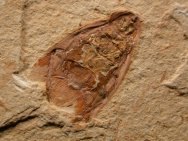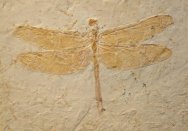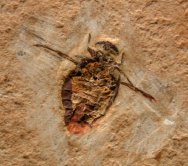The
Santana Formation
The
Santana Formation is a fossil Lagerstätte in northeastern
Brazil's Araripe Basin where the states of Pernambuco, Piauí
and Ceará come together. The strata were deposited in
the Lower Cretaceous. The
Santana Formation is especially noted for some 25 species of
exceptionally well-preserved fossil fishes, but the assemblage
also includes pterosaurs, other reptiles and amphibians, diverse
invertebrates (especially insects), and plants. Dinosaurs have
also been discovered, including new raptor was in 1996. The
unusual exceptional preservation is attributable to limestone
accretions that formed nodules around dead organisms, allowing
is soft body part preservation.
The
Crato Formation
While the entire formation has until the last decade or so been
termed the Santana Formation, David Martill has separated out
the slightly older insect-bearing strata as the Nova Olinda
Member of the Crato Formation. Quarrying operations for the
purposes of obtaining paving stones exposes the remarkable insect
fauna in much the same way that quarrying for lithographic limestone
in Solnhofen has yielded a diversity of wonderfully-preserved
Jurassic fossils in Germany. In addition to the many orders
of insects, spiders, scorpions, decapod crustaceans, and many
plants have been found. Interestingly, to date no pterosaurs
or terrestrial vertebrates have been found, in stark contrast
to the overlying Santana Formation deposits.
Crato
Formation Insect Fossils |
|
|
|
|
|
|
|
|
| |
|
|
|
| |
|
|
|
|
|
|
|
|
|
|
|












